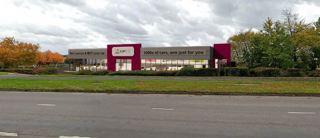Over a year ago, in my very first opinion piece, I talked about the importance for car dealers to remove emotion and subjectivity from car buying, in favour of a much more scientific, informed and data-driven approach.
This doesn’t only apply to the processes and software that make car buying possible; it’s also key in identifying which stock is likely to turn quickly and generate the highest possible profit.
In my opinion, the holy grail dealers should pursue is a combination of insights from historical data analysis and third party market data coming from reliable sources such as the classifieds.
Harness the value of historical data analysis
Imperial Cars’ historical data has become increasingly valuable over the years. We know what we stocked in the past, what worked and what vehicles are performing at the moment based on how long it takes to turn the stock. This can lead to data-driven decisions that, if necessary, are taken at derivative level.
Every dealer has certain derivatives that sell well and others that don’t, so we would suggest, whenever possible, to drill down into existing sales data for the past 3 to 6 months and look at individual performance levels. Ideally, this would take into account facelifts or new model launches, as well as age and mileage, to better assess the impact on profitability and stock turn.
Having a DMS system capable of showing trends would also be preferable. Let’s say a particular derivative performed well, and then we started seeing a drop in terms of profitability or days to turn; trends would tell us it’s time to take the foot off the gas for that specific vehicle and look for new opportunities.
Combine historical data and third party market analysis
Historical data analysis no doubt identifies what’s working - but it’s based on the past. In terms of not missing the next best thing, there’s a number of ways we can deal with that, such as getting data from classified portals and knowing what volumes of vehicles are coming through auction from ex-lease.
Analysis from the classifieds are particularly useful, as they highlight what’s hot in search in terms of advert views. We would use those as a starting point, align the data with how many vehicles are currently on the market, look for any red flags such as approaching saturation points, then find the best way to source the stock that is going to turn quickly for us and generate the profit we need in order to keep the business going.
Don’t forget geographical splits
Geographical locations play a huge part in what type of stock we source. With 14 sites and such a spread in terms of locations (we recently opened a site in Scotland and one in Wales), demographics and population density, we look for regionalised data showing which makes and models are performing best in each of those regions.
That then shapes what we might buy in terms of percentage of stock, and determines where the car is likely going to be retailed. It might not always be possible, but we try to send the car to the region that it is seen to be most desirable in.
What about the human element?
Yes, the whole buying process is becoming more and more data driven, but there’s still a level of buyer experience needed. I believe what the industry needs at the moment is a hybrid - someone with experience and a solid understanding of how to buy, who can then be led by data on what to buy.
The days in which a single buyer would purchase a vehicle based on a hunch that the car would perform well (you can almost picture him putting his finger up in the air at auction) should be left well and truly in the past.
Author: Neil Smith, operations director, Imperial Cars

















Login to comment
Comments
No comments have been made yet.